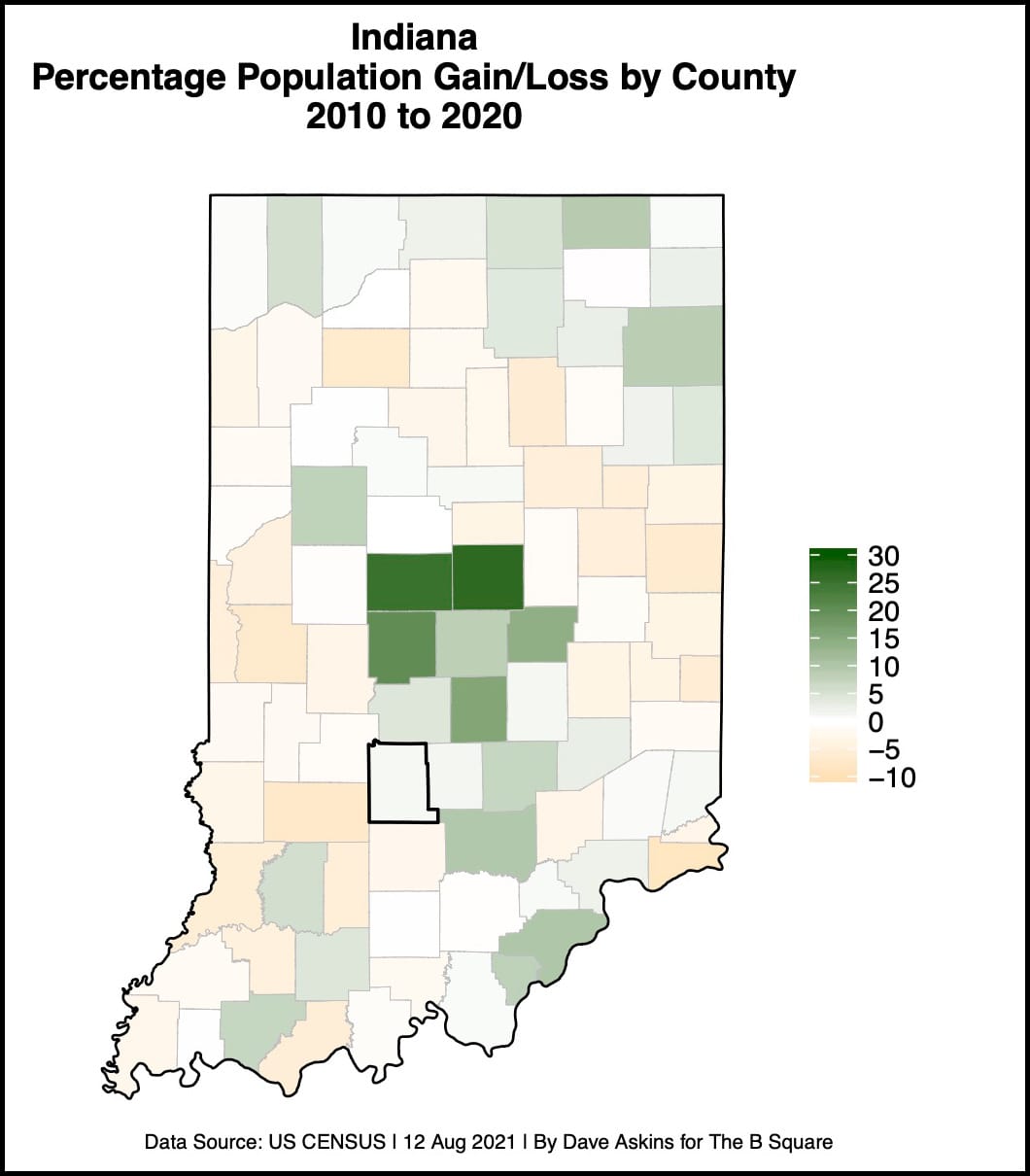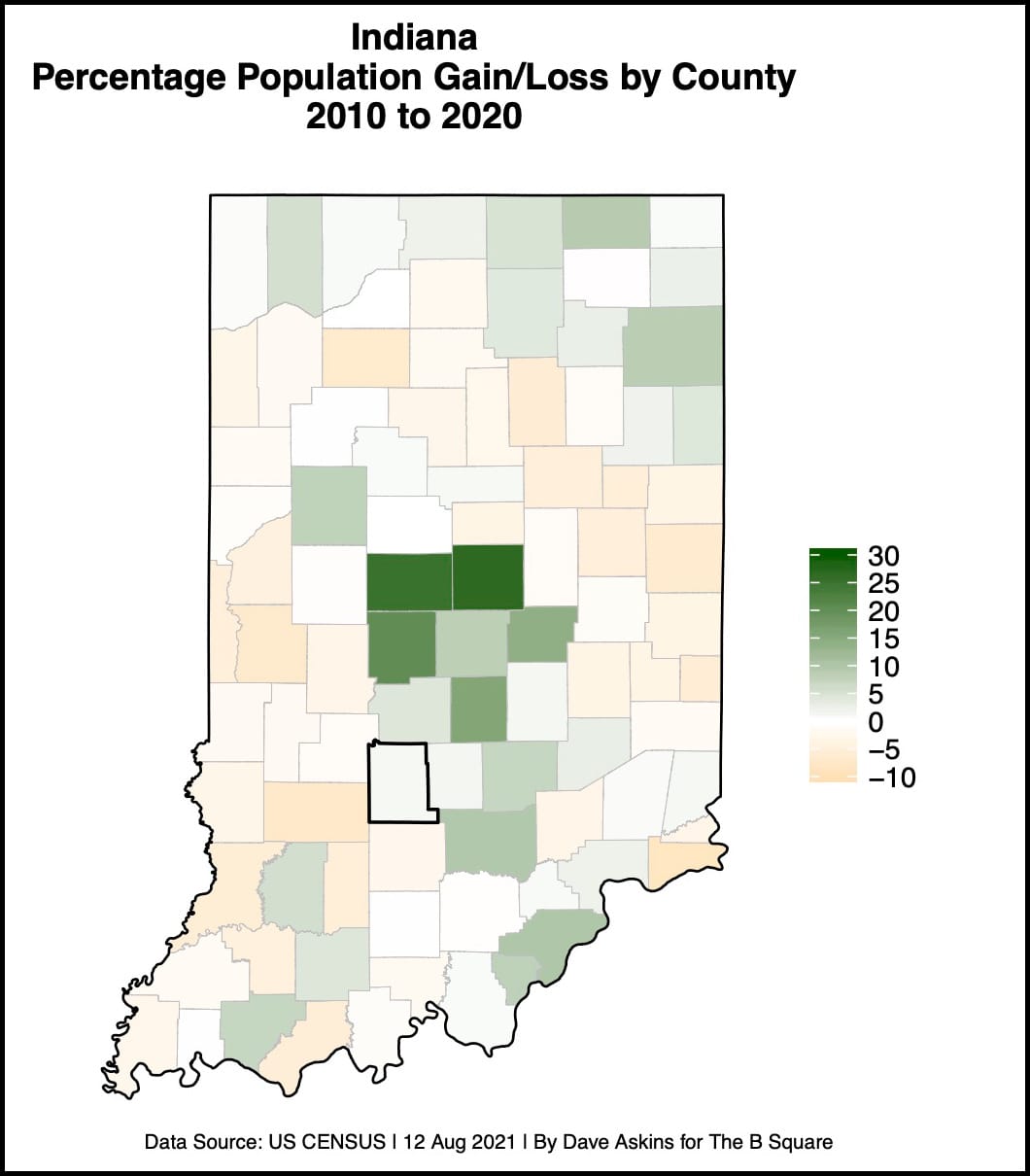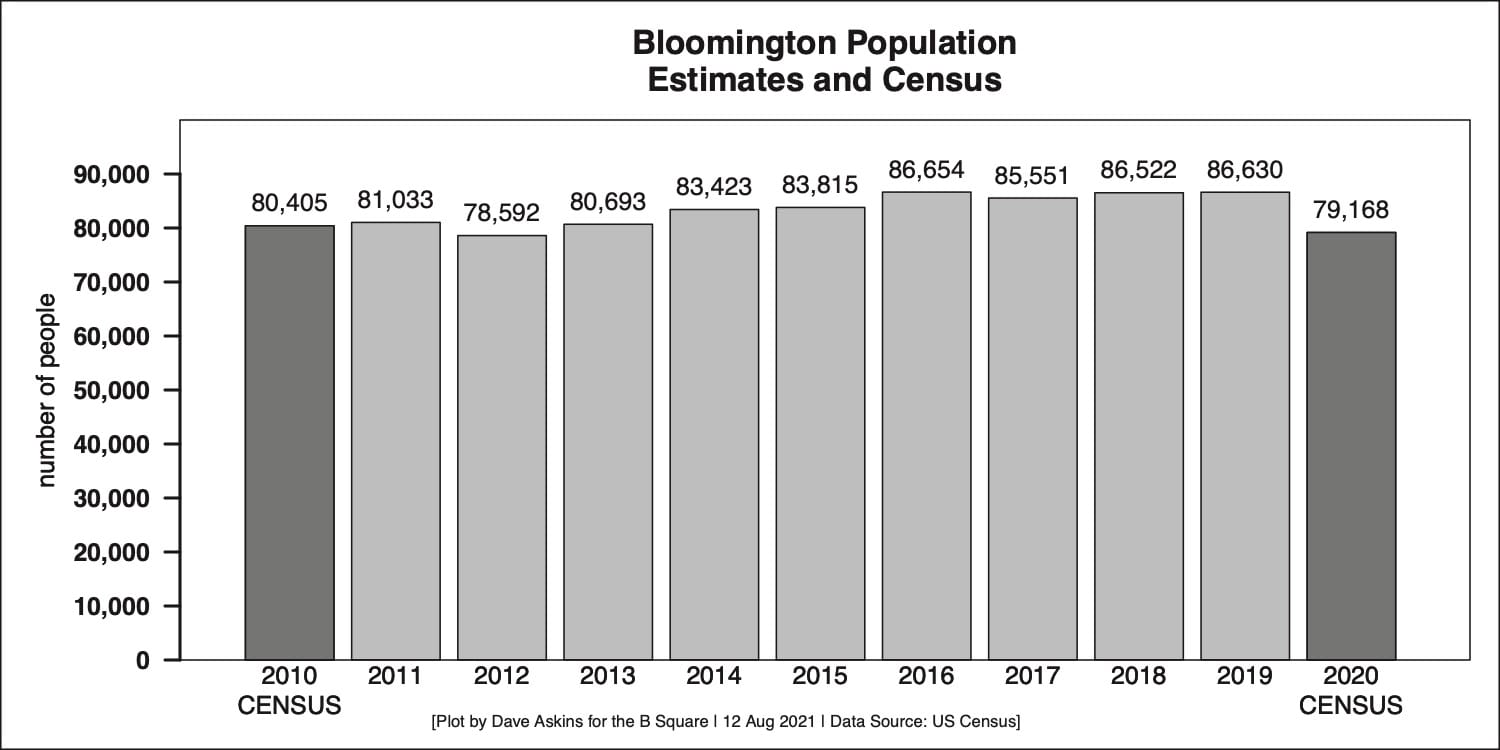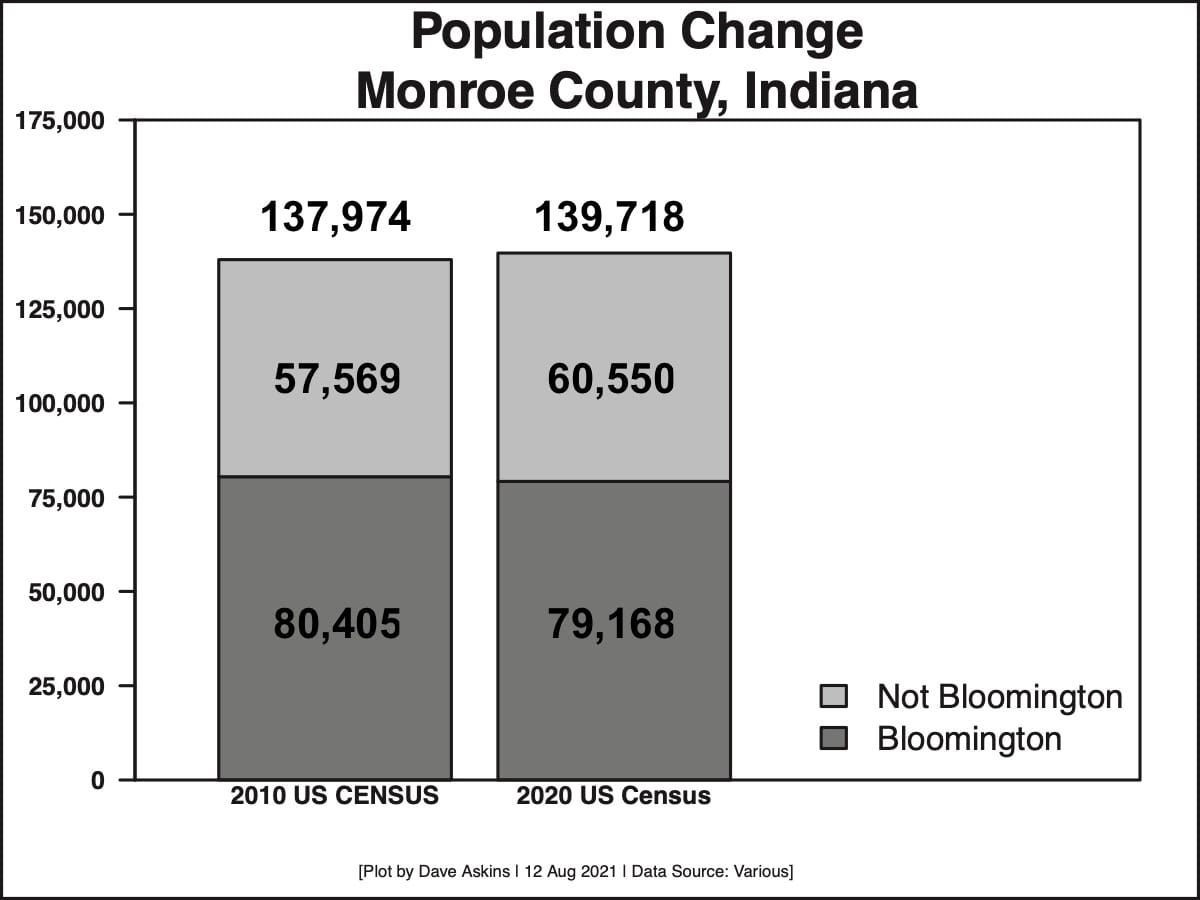US Census 2020: Bloomington population down 1.5%, Monroe County up 1.3%, Indiana up 4.7%




Bloomington has lost population since 2010. That’s based on fresh 2020 numbers released by the US Census Bureau around 1 p.m. on Thursday.
In 2020, Bloomington’s census was 79,168, which is 1,237 fewer than the 80,405 Bloomington residents who were counted ten years ago. That’s a 1.5-percent loss in population over the last decade.
Based on initial inquiries by The B Square to local experts, the possibility that Bloomington’s numbers reflect an undercount of Indiana University students, because of the pandemic, is a leading theory for Bloomington’s drop.
For Monroe County overall, Thursday’s news was not quite as bleak. The number of Monroe County residents counted by the US Census in 2020 was 139,718, or about 1.3 percent more than the 137,974 who were counted in 2010.
Bloomington and Monroe County’s trends fall outside the growth of the Indianapolis metro area. Overall, Indiana showed a roughly 4.7 percent growth in population over the last ten years.
Indiana’s total population in 2020 was measured at 6,785,528, compared to 6,483,802 in 2010.
Of Indiana’s 92 counties, more than half (49) showed a population loss compared to 2010. The general trend matches the last several years and is not limited to Indiana. Growth in overall numbers nationwide is driven by metro areas, even as less dense areas lose population.
Population numbers affect federal funding allocations. The impact on additional federal funding has been estimated by the Indiana Business Research Center at $2,710 per person.
The additional 301,726 Hoosiers counted in 2020 compared to 2010 would add up to about $800 million in federal funding.
Bloomington’s loss in its population count likely comes as a surprise to locals. The most recent annual estimate from the US Census had pegged Bloomington’s population at around 86,000.
Was Bloomington’s official 2020 US Census count suppressed, due to the pandemic?
This year, the census invitations were sent out from March 12 to March 20, right around the time when Indiana University students were being informed that classes would be conducted remotely for the rest of the semester and that the dorms would be closed. Census Day was April 1.
An accurate census depends on Indiana University students filling out their census forms correctly, indicating their permanent residence as Bloomington.
Indiana University tried to ensure that numbers for its on-campus residents were accurate, despite the pandemic, by taking a “group-quarters” approach to reporting residence hall populations to the US Census.
On that approach, even if a parent of a student reported them as a part of the household on April 1—because they had moved back home—the US Census Bureau could reconcile those duplicates in favor of the “group-quarters” report.
Still, the off-campus student population that might have been significantly undercounted for Bloomington.
Some potential evidence of a pandemic effect on Bloomington’s 2020 census numbers has been identified in Thursday’s data release by Carol Rogers, who’s co-director of the Indiana Business Research Center at IUPUI.
Rogers told The B Square that it looks like Bloomington’s count of vacant housing units could point to a pandemic effect that included an undercount of students.
In 2010, the count of vacant housing units was 1814. In 2020, the count was 3,250 vacant units. That’s an 80-percent increase.
Rogers said, “What that’s telling me right now is that there may be an issue with the fact that many of the students left at the beginning of a pandemic.” Rogers added, “I’m concerned that part of that could be a pandemic effect.”
“The number of vacant housing units really surprises me—especially at a time when 2019-2020 everybody’s talking about ‘not enough housing.’ You just wouldn’t expect that many vacant housing units.”
Rogers said the question would require more study: “Can I at this moment prove a pandemic effect? This is something that we’re going to have to really dig into at the research center.”
[Updated on Aug. 13, 2021 at 1:15 p.m. A statement from Bloomington’s mayor, John Hamilton, was provided to The B Square: “We are delving into these surprising census numbers, which don’t seem to jibe with the steady population growth we have seen reported and reflected in local data. Nor do they correlate with the steady increase projected in the census’ own estimates from 2010 on, including a 2019 estimate of more than 85,000. We can imagine that the numbers reflect unique and unfortunate timing: much of the census data collection began the very week thousands of university students were directed to leave for the semester due to the COVID pandemic. And of course there were political controversies that accompanied this decennial census from the beginning. We will be exploring all options to assure a correct count of our population.”]




Comments ()